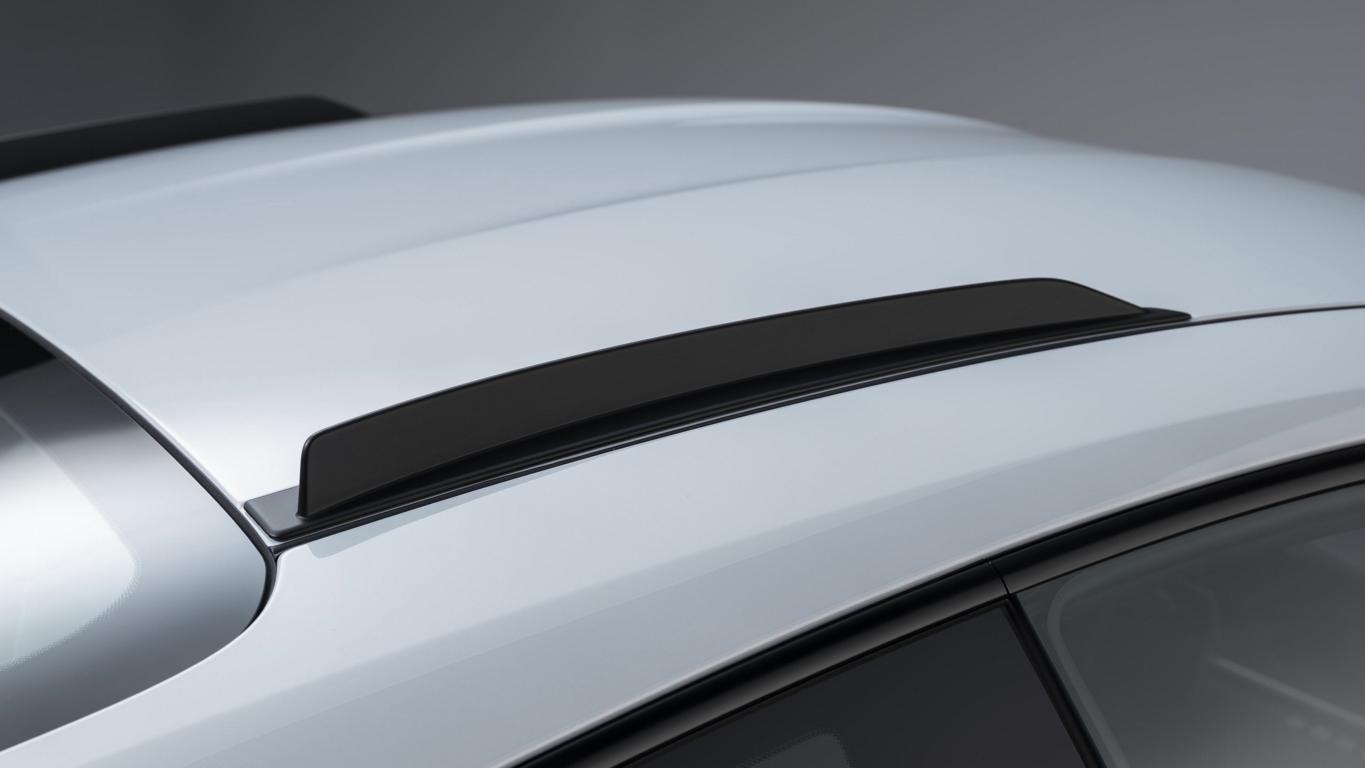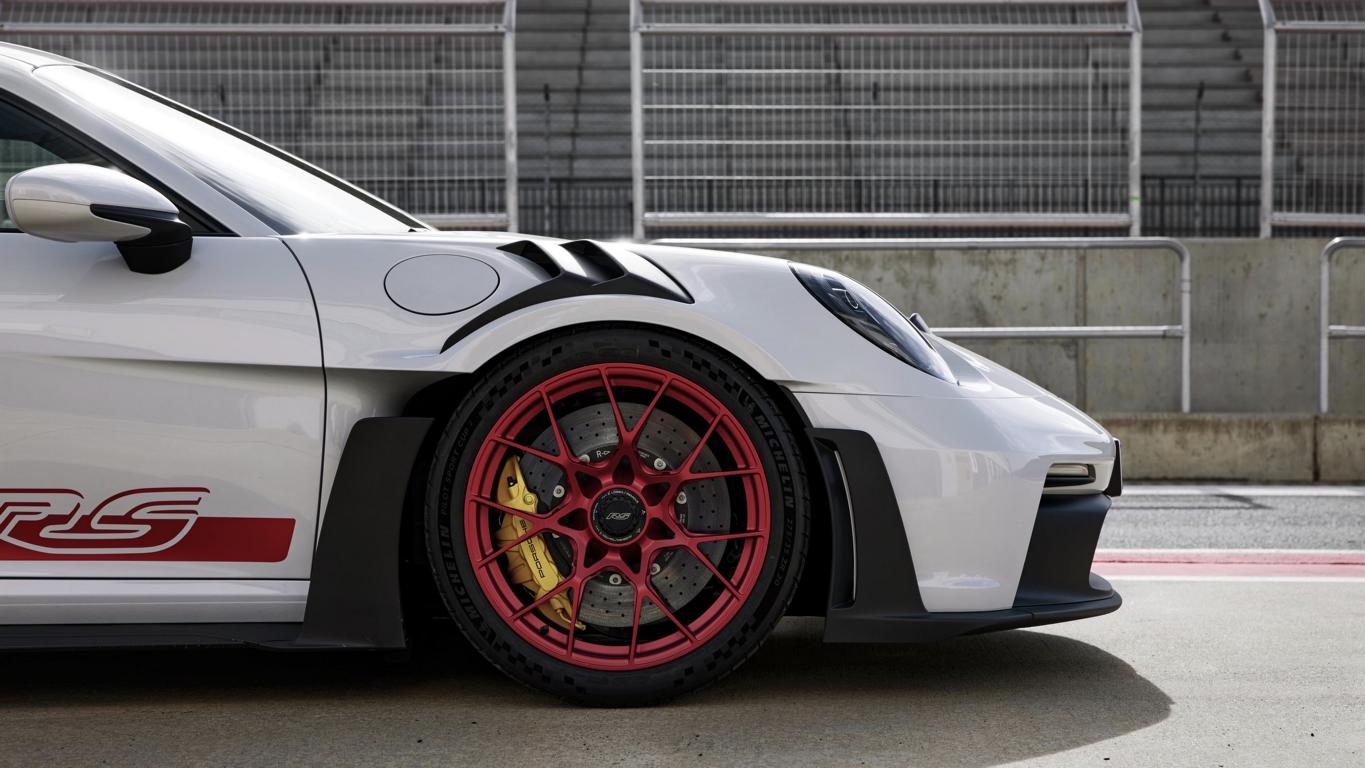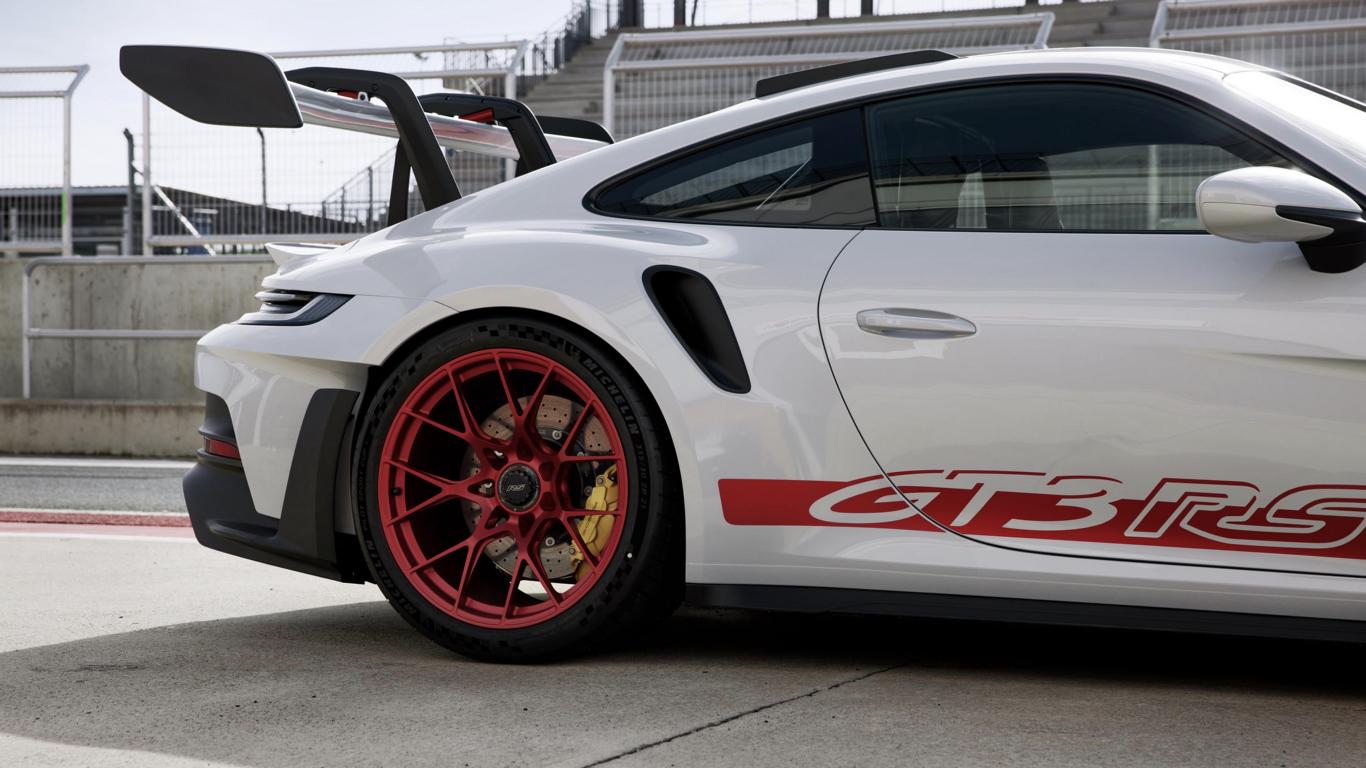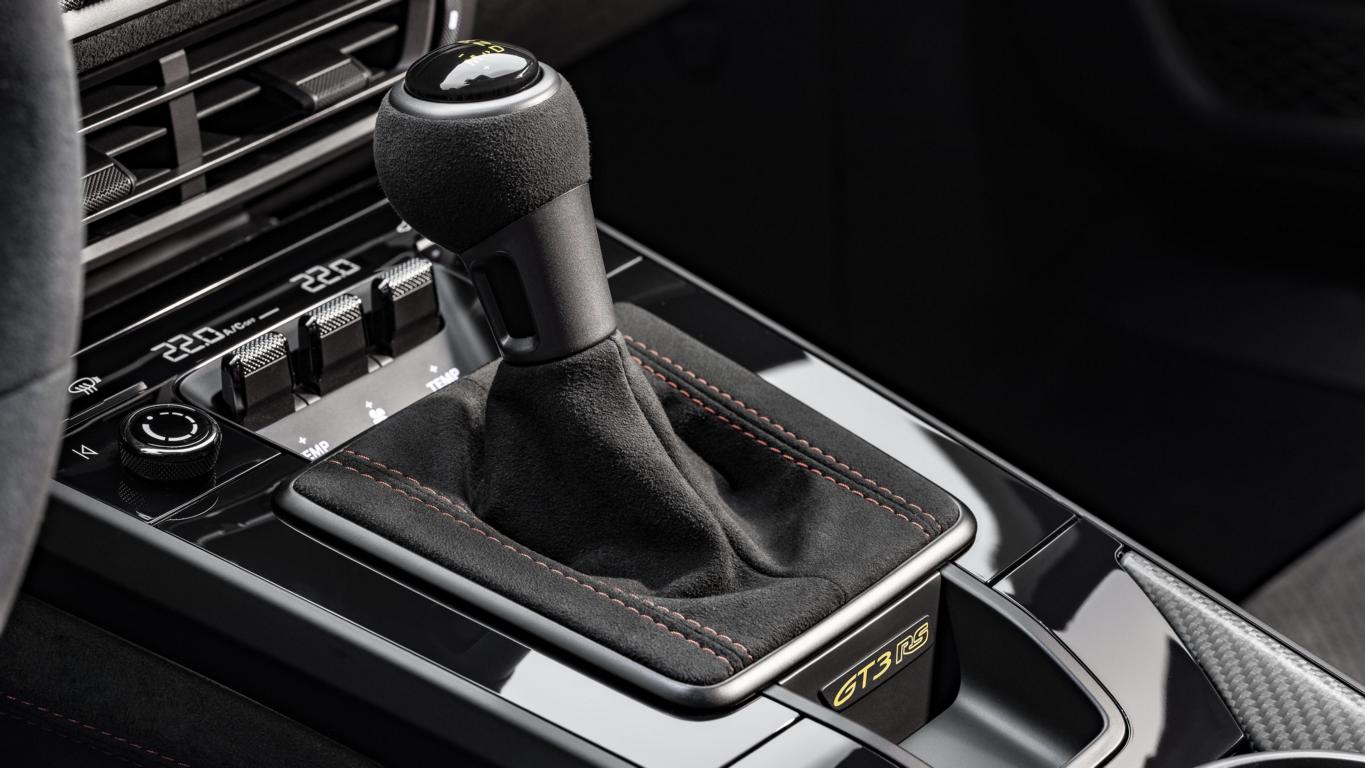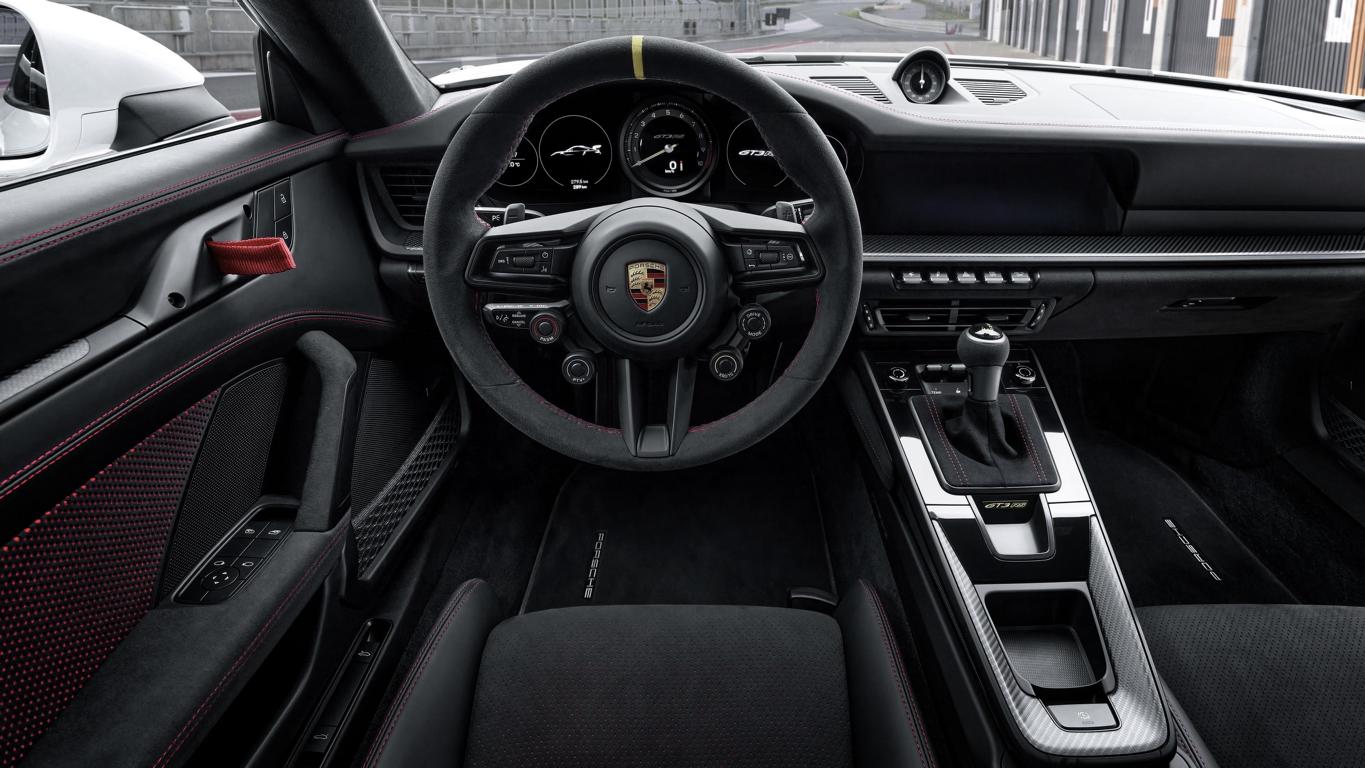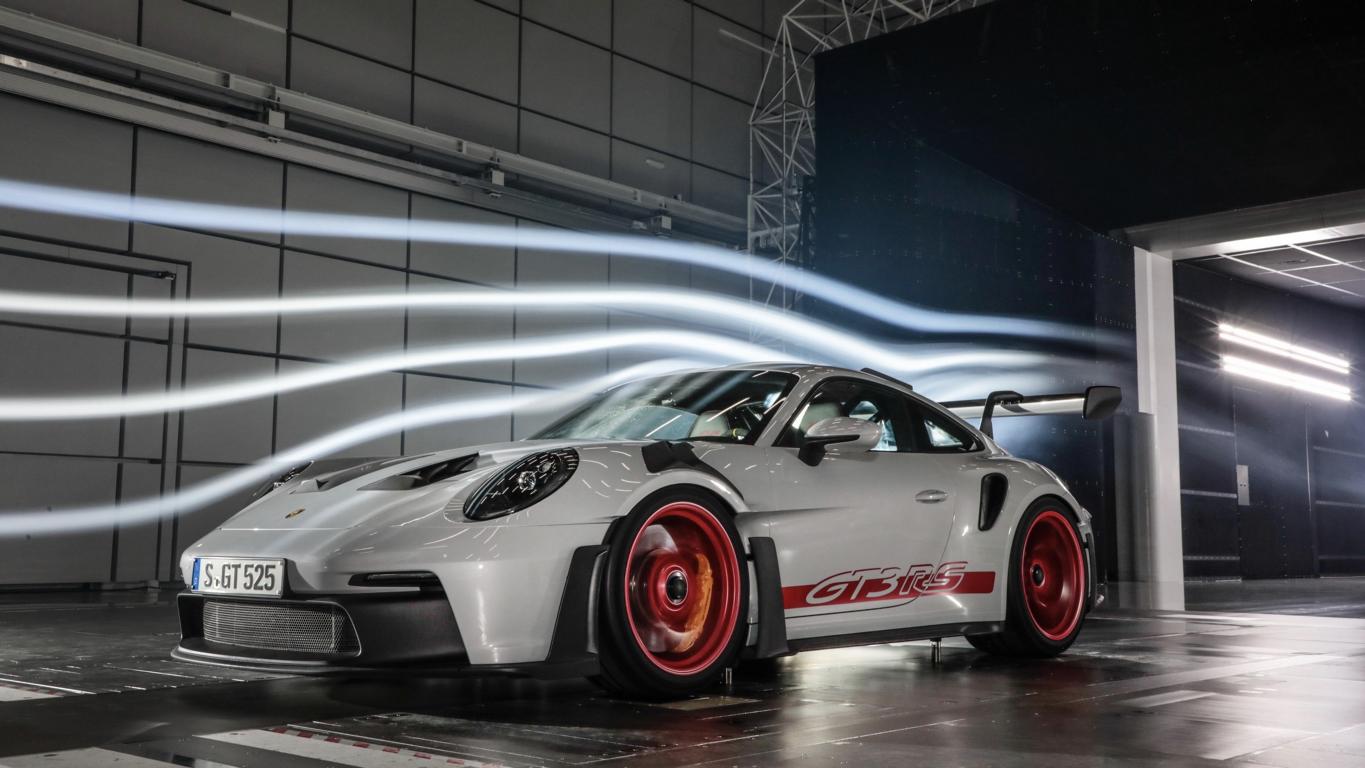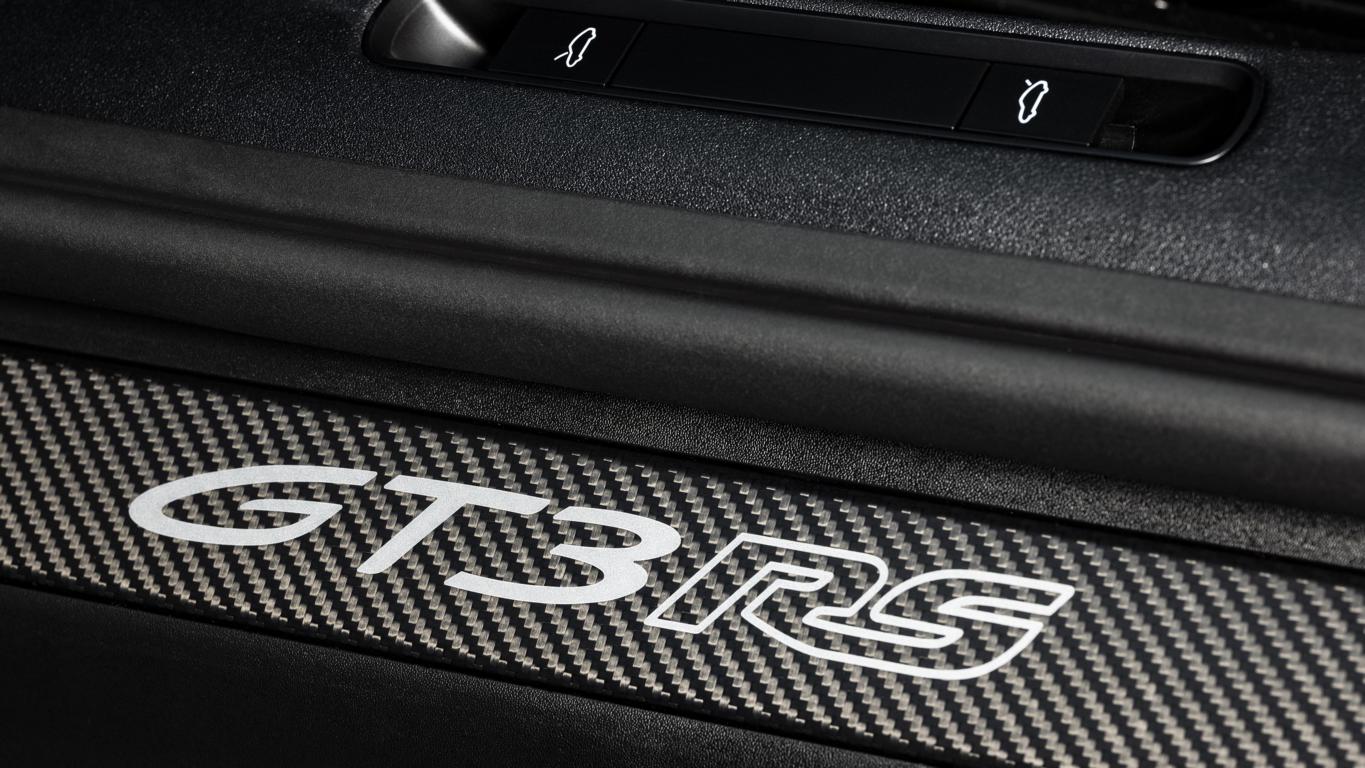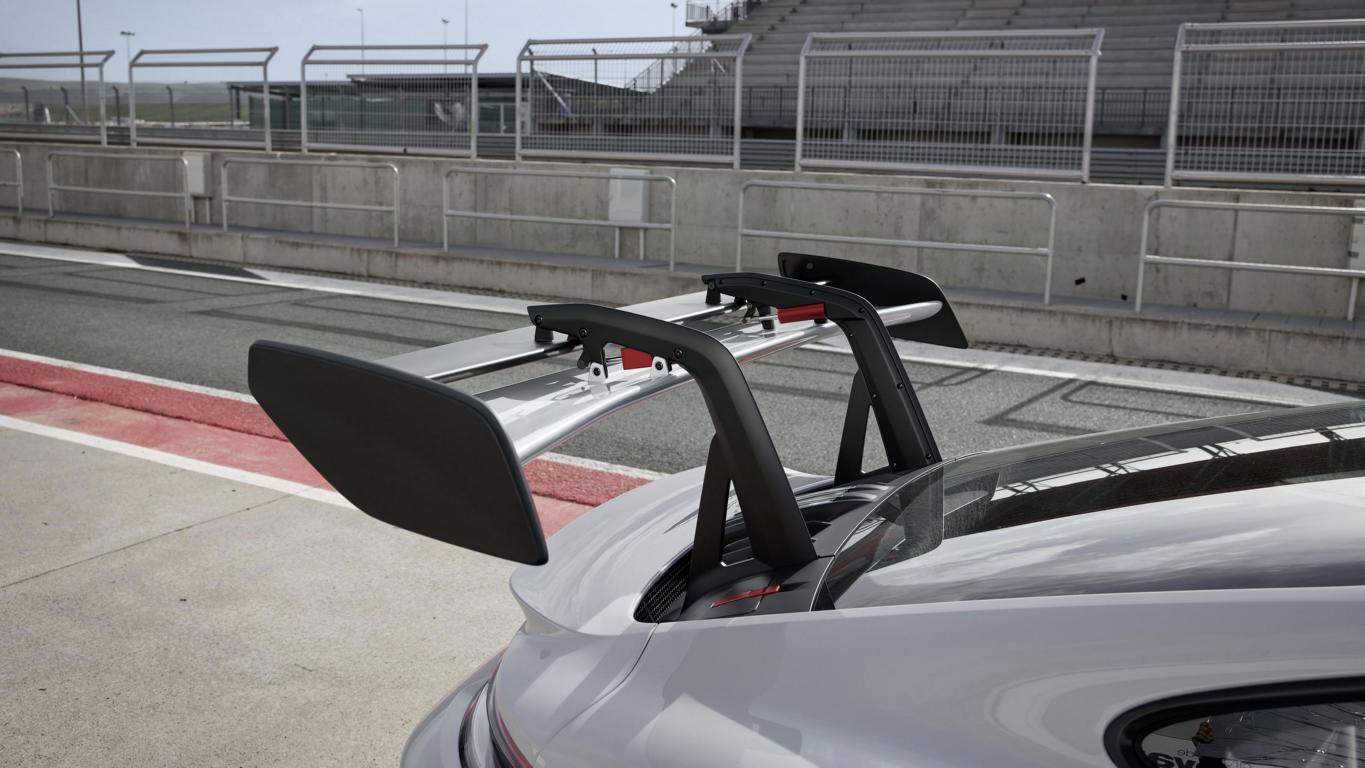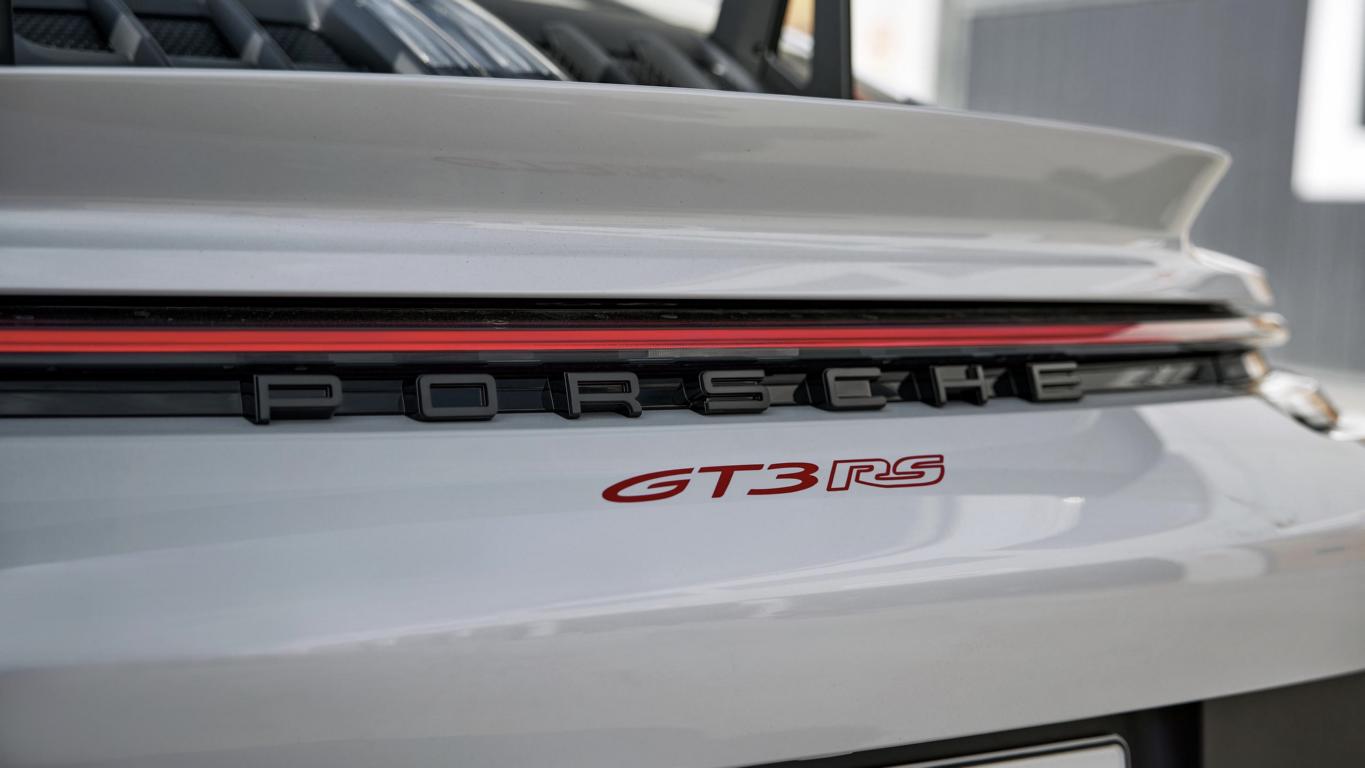The street-legal high-performance sports car consistently uses the technologies and principles from motorsport. In addition to the high-revving naturally aspirated engine with racing genes and intelligent lightweight construction, the cooling and aerodynamic concept in particular proves the direct relationship with its motorsport brother 911 GT3 R. The basis for the significant increase in performance is the center cooler concept, which was first used in the Le Mans class winner 911 RSR and subsequently was also used in the 911 GT3 R. Instead of the previous layout with three coolers, the new 911 GT3 RS uses a large, diagonally arranged central cooler in the front end. This is positioned where the trunk is on other 911 models. This made it possible to use the space that had been freed up at the side to integrate active aerodynamic elements.
Center cooler concept from motorsport
Infinitely adjustable wing elements at the front and on the two-part rear wing, in combination with numerous other aerodynamic measures, ensure a total downforce of 409 kilograms at 200 km/h. The new 911 GT3 RS thus generates twice as much downforce as its predecessor (Type 991 II) and three times as much as a current 911 GT3. At 285 km/h, the total output is 860 kilograms.
A Drag Reduction System (DRS) is installed in a production Porsche for the first time. With the DRS, the wings can be flattened at the push of a button within a defined working range in favor of low air resistance and higher speed on straight sections of track. In the event of emergency braking from high speeds, the airbrake function becomes active: the wing elements at the front and rear are set to the maximum and thus generate an aerodynamic deceleration effect that significantly supports the wheel brakes.
The multitude of functional aerodynamic elements characterizes the body design of the new 911 GT3 RS. The most prominent feature of the GT sports car is the rear wing, which has grown significantly in all dimensions and has a gooseneck suspension. This consists of a fixed main wing and an upper, hydraulically adjustable wing element. For the first time in a Porsche production vehicle, the upper edge of the rear wing is higher than the roof. In addition, the front end of the 911 GT3 RS no longer has a front spoiler, but a so-called front splitter, which divides the overflowing and underflowing air. Side blades direct the air outwards in a targeted manner. The front wheel arch ventilation is via openings in the fenders (louvers).
Indentations behind the front wheels in the style of the iconic Le Mans overall winner 911 GT1 reduce the dynamic pressure in the wheel housing. Side blades behind the intake ensure that the air is directed towards the side of the vehicle. The air from the middle cooler flows out through large nostrils on the front hood. Fins on the roof direct the air outwards and thus ensure cooler intake temperatures at the rear. The openings in the rear side section of the new 911 GT3 RS are only used to improve aerodynamics and not to suck in the process air. The rear wheel house is also fitted with an indentation and a side blade for optimized airflow. The diffuser at the rear comes from the 911 GT3 and has been slightly modified.
Circuit chassis that can be adapted from the cockpit
The aerodynamic detail work does not even stop at the chassis. Since the wheel arch of the new 911 GT3 RS is heavily ventilated, the components of the double wishbone front axle are designed as teardrop profiles. These aero bars increase the downforce on the front axle by around 40 kilograms at top speed and are otherwise only used in high-class motorsport. Due to the wider track (plus 29 millimeters compared to the 911 GT3), the links of the double wishbone front axle are also correspondingly longer. To ensure that the output balance between the front and rear axles is maintained even when braking from high speeds, the chassis engineers have significantly reduced pitching (antidive). The front ball joint of the lower trailing arm on the front axle of the 911 GT3 RS has therefore been moved downwards. The multi-link rear axle has also been adjusted with modified spring rates.
The driving assistance systems and the rear-axle steering also have an even more dynamic set-up. The 911 GT3 RS offers three driving modes: Normal, Sport and Track. In track mode, the basic settings can be individually adjusted. Among other things, the compression and rebound stages of the dampers on the front and rear axles can be adjusted separately and in multiple stages. The rear differential lock can also be adjusted using rotary controls on the steering wheel. This is done quickly and intuitively with the operating and display concept also taken from motorsport.
Four individual knobs and a button for the Drag Reduction System (DRS) are located on the steering wheel. The control dials are clearly displayed graphically in the instrument cluster during the adjustment process. The 911 GT3 RS also has the track screen already known from the 911 GT3. At the push of a button, the driver can reduce the digital displays on the two side seven-inch displays to the essential information. The shift indicator on the left and right of the analogue rev counter was also taken from the GT3.
Four-litre, six-cylinder boxer engine with a high-revving concept
The four-litre, high-revving naturally aspirated engine has been further optimized compared to the 911 GT3. The increase in output to 386 kW (525 hp) is primarily achieved via new camshafts with modified cam profiles. The individual throttle valve intake system and the rigid valve train are derived from motorsport. The Porsche Doppelkupplung (PDK) with seven gears has a shorter overall gear ratio compared to the 911 GT3. Air inlets on the underbody ensure that the transmission can withstand extreme loads when used frequently on the circuit. The 911 GT3 RS accelerates from zero to 3,2 km/h in 100 seconds and reaches a top speed of 296 km/h in seventh gear.
Aluminum monobloc fixed caliper brakes, each with six pistons, and brake discs with a diameter of 408 millimeters are used on the front axle. Compared to the 911 GT3, the piston diameter has been increased from 30 to 32 millimeters. In addition, the thickness of the discs has been increased from 34 to 36 millimeters. The rear axle still has 380 millimeter brake discs and four-piston fixed caliper brakes. The optionally available Porsche Ceramic Composite Brake (PCCB) has discs measuring 410 millimeters on the front axle and 390 millimeters on the rear axle. The new 911 GT3 RS rolls on forged alloy wheels with central locking as standard. Street-legal sports tires in the dimensions 275/35 R 20 at the front and 335/30 R21 at the rear ensure a high degree of mechanical grip.
Lightweight construction as a principle
Intelligent lightweight construction has been part of the basic principle of all RS models since the presentation of the legendary 911 Carrera RS 2.7 at the latest. Thanks to a large number of lightweight construction measures such as the extensive use of CFRP, the 911 GT3 RS weighs just 1.450 kilograms (curb weight according to DIN) despite many larger components. The doors, the front fenders, the roof and the front lid, for example, are made of CFRP. Lightweight CFRP is also used in the interior, for example in the standard bucket seats.
Available with Clubsport and Weissach packages
The interior of the new GT sports car is presented in the typical RS style: Black leather, Racetex and visible carbon characterize the purist, sporty ambience. The 911 GT3 RS is available with a Clubsport package at no extra cost. This includes, among other things, a steel roll bar, a hand-held fire extinguisher and a six-point seat belt for the driver's side. The Weissach package, which is available for an extra charge, is significantly more extensive. The front lid, roof, parts of the rear wing and the upper shell of the exterior mirrors are then made of visible carbon. The stabilizers at the front and rear, the rear coupling rods and the thrust area on the rear axle are made of CFRP and contribute to a further improvement in driving dynamics.
The roll bar, made from CFRP for the first time, saves around six kilograms in weight compared to the steel version. Another highlight of the Weissach package are the PDK shift paddles with magnet technology from motorsport. Shifting is even sportier thanks to a more precise pressure point and a clearly perceptible click. Magnesium forged wheels are available as an option for the Weissach package, saving eight kilograms of weight.
Exclusive Porsche Design Chronograph
Inspired by the mindset of motorsport - where maximum precision is the top priority - Porsche's own watch manufactory in Solothurn, Switzerland, developed the chronograph 911 GT3 RS. This mechanical clock is reserved for owners of the vehicle. The basis is a glass bead blasted case made of natural titanium or black titanium with a screw-down crown. Inside the watch is the mechanical Porsche Design chronograph caliber WERK 01.200, which has been COSC-certified for its high accuracy. The so-called flyback function combines starting, stopping and zeroing in one process. The chronograph pushers with the laser engravings "Start/Stop" and "Next Lap" make it clear that this chronograph is not just about displaying the time. In addition to innovations such as the pulsometer scale on the bezel, many design features and materials of the GT3 RS can be found again.
Info: The new 911 GT3 RS can be ordered now and costs in Germany from 229.517 euros1.
Don't worry, of course that was far from being the case when it came to auto / auto tuning. Our magazine still has tens of thousands other tuning reports in stock. Do you want to see them all? Then just click HERE and look around. Or are you particularly interested in everything to do with vehicles of the Porsche brand? Then click on one of the following posts!
other related posts
|
Porsche 911 Carrera GTS-50 Year Anniversary One of a Kind for Taiwan! |
 tuningblog.eu Your magazine about tuning the car
tuningblog.eu Your magazine about tuning the car


